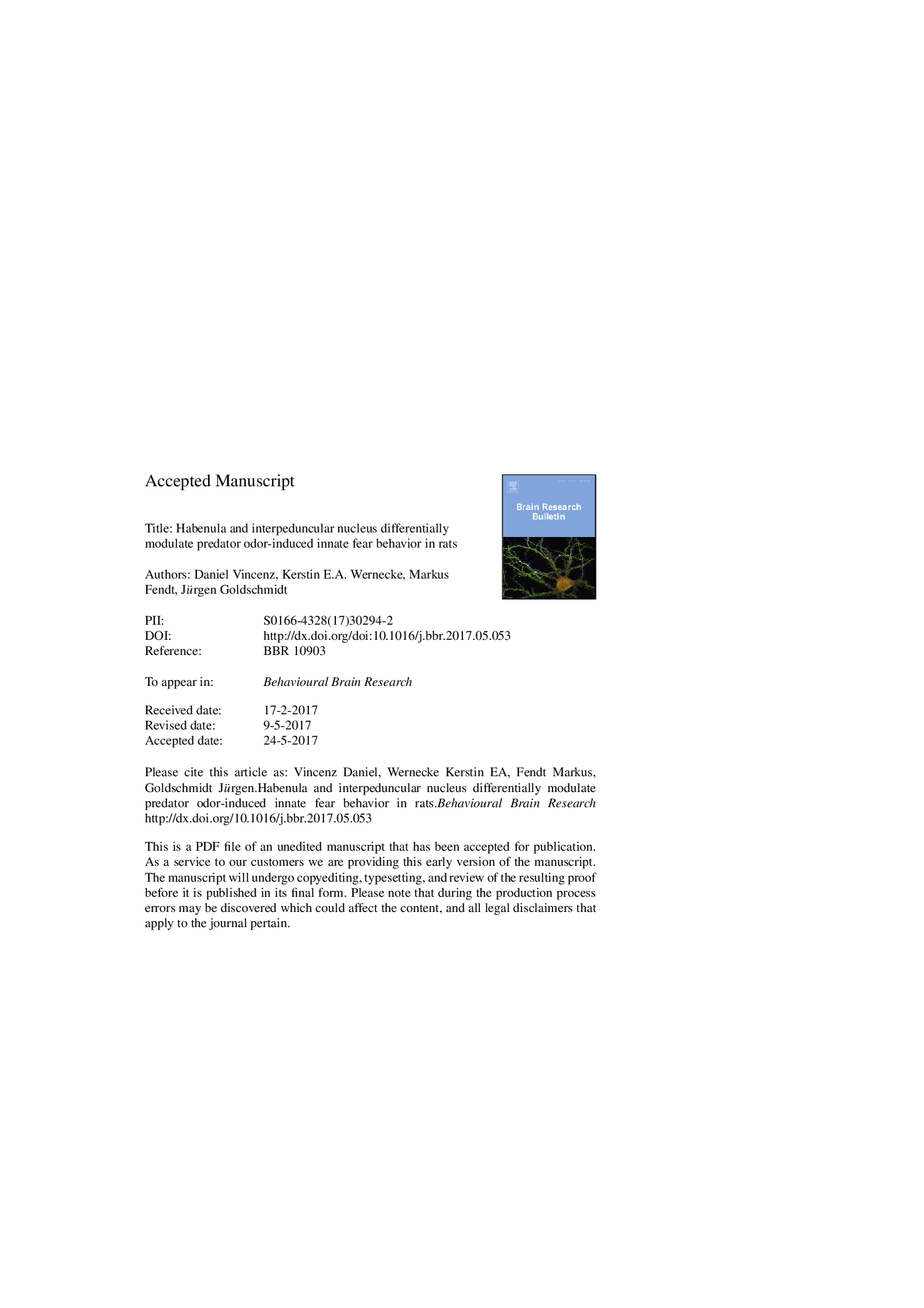| کد مقاله | کد نشریه | سال انتشار | مقاله انگلیسی | نسخه تمام متن |
|---|---|---|---|---|
| 5735115 | 1612903 | 2017 | 30 صفحه PDF | دانلود رایگان |
عنوان انگلیسی مقاله ISI
Habenula and interpeduncular nucleus differentially modulate predator odor-induced innate fear behavior in rats
دانلود مقاله + سفارش ترجمه
دانلود مقاله ISI انگلیسی
رایگان برای ایرانیان
موضوعات مرتبط
علوم زیستی و بیوفناوری
علم عصب شناسی
علوم اعصاب رفتاری
پیش نمایش صفحه اول مقاله

چکیده انگلیسی
Fear is an important behavioral system helping humans and animals to survive potentially dangerous situations. Fear can be innate or learned. Whereas the neural circuits underlying learned fear are already well investigated, the knowledge about the circuits mediating innate fear is still limited. We here used a novel, unbiased approach to image in vivo the spatial patterns of neural activity in odor-induced innate fear behavior in rats. We intravenously injected awake unrestrained rats with a 99m-technetium labeled blood flow tracer (99mTc-HMPAO) during ongoing exposure to fox urine or water as control, and mapped the brain distribution of the trapped tracer using single-photon emission computed tomography (SPECT). Upon fox urine exposure blood flow increased in a number of brain regions previously associated with odor-induced innate fear such as the amygdala, ventromedial hypothalamus and dorsolateral periaqueductal grey, but, unexpectedly, decreased at higher significance levels in the interpeduncular nucleus (IPN). Significant flow changes were found in regions monosynaptically connected to the IPN. Flow decreased in the dorsal tegmentum and entorhinal cortex. Flow increased in the habenula (Hb) and correlated with odor effects on behavioral defensive strategy. Hb lesions reduced avoidance of but increased approach to the fox urine while IPN lesions only reduced avoidance behavior without approach behavior. Our study identifies a new component, the IPN, of the neural circuit mediating odor-induced innate fear behavior in mammals and suggests that the evolutionarily conserved Hb-IPN system, which has recently been implicated in cued fear, also forms an integral part of the innate fear circuitry.
ناشر
Database: Elsevier - ScienceDirect (ساینس دایرکت)
Journal: Behavioural Brain Research - Volume 332, 14 August 2017, Pages 164-171
Journal: Behavioural Brain Research - Volume 332, 14 August 2017, Pages 164-171
نویسندگان
Daniel Vincenz, Kerstin E.A. Wernecke, Markus Fendt, Jürgen Goldschmidt,